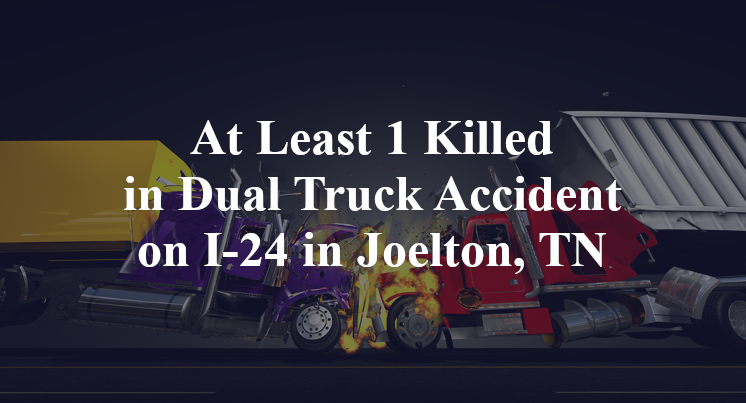At Least 1 Killed in Dual Truck Accident on I-24 in Joelton, TN
Joelton, TN — October 14, 2025, at least one person was killed due to a two-truck accident shortly after midnight along Interstate Highway 24.
According to authorities, the accident occurred on I-24 in the vicinity southeast of New Hope Road (State Highway 249).

Details surrounding the accident remain scarce. Officials indicate that, for as yet unknown reasons, a collision occurred between a garbage truck and an 18-wheeler. The accident was reportedly fatal, though it is still unclear how many people perished as a result of the wreck. Additional information pertaining to this incident—including the identity(s) of the victim(s)—is not available at this point in time. The investigation is currently ongoing.
Commentary by Attorney Michael Grossman
When two commercial trucks collide—especially in the early hours of the morning—investigators have to look well beyond the surface. At that hour, the road isn’t typically congested, so if a crash still happens, it often points to problems with visibility, driver attention, or equipment failure. The fact that it was fatal only adds urgency to figuring out exactly what went wrong.
Right now, there’s no public explanation for how the garbage truck and 18-wheeler ended up in each other’s path. Was one vehicle stopped or moving slowly in the travel lane? Did one attempt an unsafe lane change or merge? These are crucial questions that only engine control module (ECM) data, dash cams, and eyewitness accounts can answer.
Both vehicles being commercial in nature also means both drivers—and both companies—are subject to strict federal safety rules. Investigators should be reviewing hours-of-service logs to determine if either driver was pushing the legal limits for drive time. Overnight routes are common for both garbage collection and long-haul freight, and fatigue is a well-documented risk during that window.
Another line of inquiry should be the lighting and reflectivity of each truck. If one was pulled over or moving unusually slowly, was it properly marked with hazard lights or reflective tape? I’ve worked on cases where a driver never saw the vehicle ahead until it was too late—not because they weren’t looking, but because the other vehicle wasn’t clearly visible in time to react.
And finally, this kind of crash may involve multiple layers of fault. One truck may have made the triggering mistake, but the other may have failed to respond in time. That’s why evidence from both vehicles—not just the one that appears at fault—is essential for an honest assessment of liability.
Key Takeaways:
- The cause of the crash remains unknown, but ECM data and dash cams will be key to reconstructing each vehicle’s movement.
- Fatigue is a major concern in overnight crashes and should prompt a close review of hours-of-service compliance.
- Vehicle visibility—lighting, reflectors, and hazard markers—could be a factor, especially if one truck was stopped or slow-moving.
- Both trucking companies’ safety records, training protocols, and dispatch practices deserve scrutiny.
- Determining liability in a two-truck crash often requires evaluating not just who caused the crash, but whether both parties responded appropriately.

“These are essential reads for anyone dealing with the aftermath of a truck wreck”– Attorney Cory Carlson